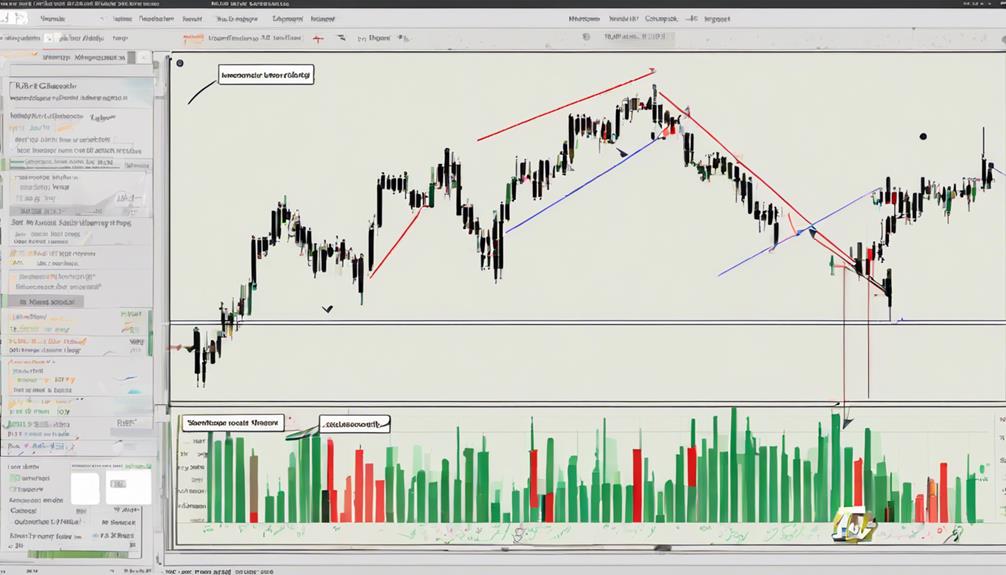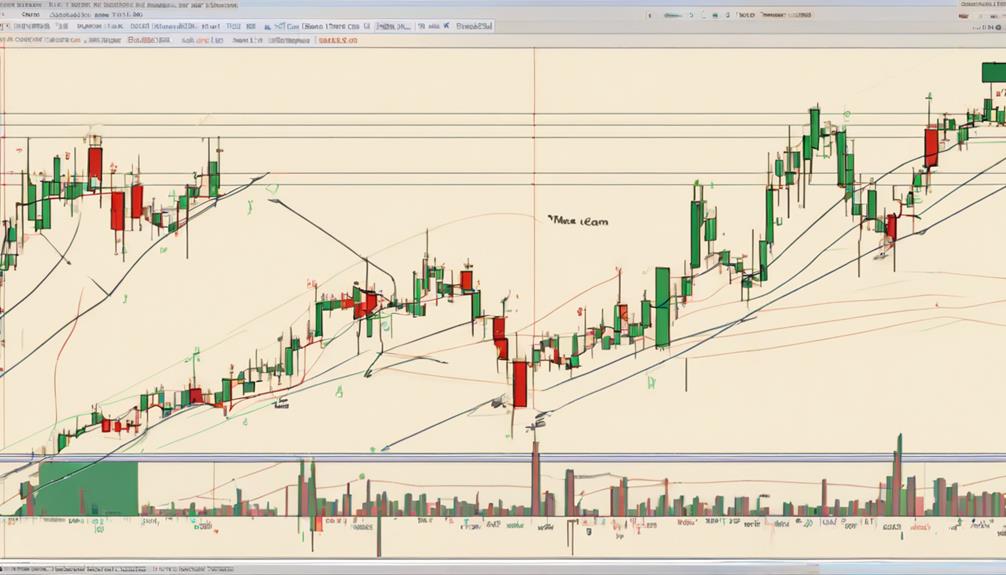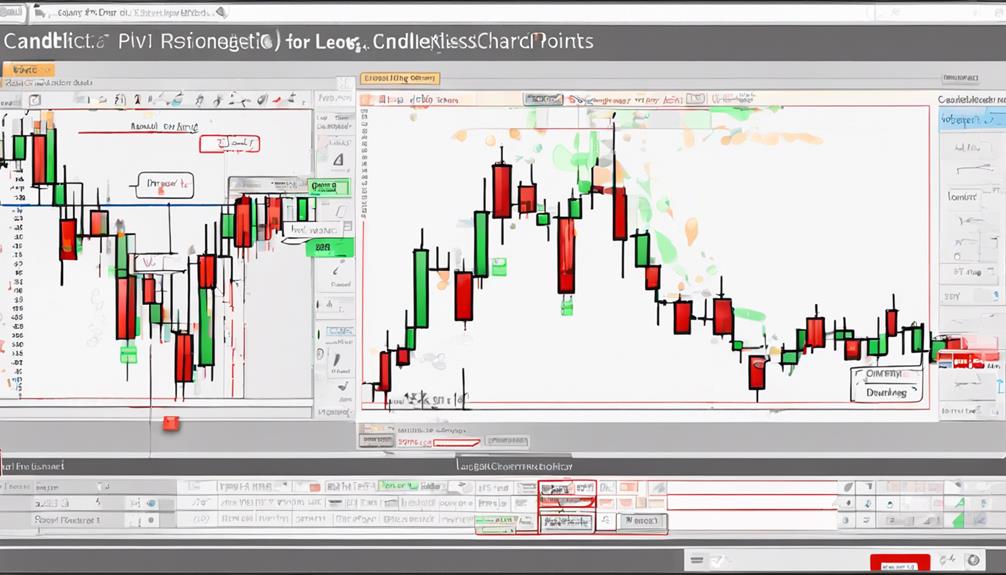Understanding how to calculate Forex pivot points can significantly enhance a trader's technical analysis toolkit. These pivotal levels serve as crucial indicators for potential market movements, guiding traders on optimal entry and exit points.
By grasping the intricacies of pivot point calculation and application, traders gain a strategic edge in navigating the dynamic currency markets. The ability to interpret these key levels effectively can lead to more informed trading decisions and improved risk management practices.
Explore the world of Forex pivot points to unlock a deeper understanding of market dynamics and enhance your trading prowess.
Understanding Forex Pivot Points Calculation
The comprehension of Forex pivot points calculation is fundamental for traders seeking to navigate the intricacies of market analysis and strategic decision-making.
Pivot points are key technical indicators used in trading to determine potential support and resistance levels based on the previous trading session's high, low, and close prices.
The pivot point itself is the central level around which support levels (S1, S2, S3) and resistance levels (R1, R2, R3) are calculated.
These levels play a crucial role in understanding price action and market sentiment.
Identifying Support and Resistance Levels

Support and resistance levels in Forex trading serve as critical markers for potential price reversals and strategic decision-making. These levels, derived from pivot points and historical price data, play a significant role in technical analysis. Here are key points to consider:
- Support levels (S1, S2, S3) are crucial buying zones located below the pivot point.
- Resistance levels (R1, R2, R3) represent potential selling zones situated above the pivot point.
Traders utilize support and resistance levels to set profit targets effectively. These levels aid in determining optimal entry and exit points for trades. Pivot points, along with support and resistance levels, are pivotal areas where price movements often experience reversals or accelerations.
Step-by-Step Pivot Points Calculation Process

Exploring the process of calculating pivot points in forex trading involves a methodical analysis of high, low, and closing prices from the previous trading day to derive key levels for strategic decision-making.
To begin, gather the high, low, and closing prices from the prior trading session. The pivot point is then calculated by adding the high, low, and closing prices together and dividing by 3.
Once the pivot point is determined, support levels (S1, S2, S3) are calculated by subtracting multiples of the range from the pivot point, while resistance levels (R1, R2, R3) are found by adding multiples of the range to the pivot point.
These pivot points, along with the support and resistance levels, play a crucial role in guiding trading decisions within the forex market. By understanding and utilizing these calculated levels, traders can make more informed choices when developing their trading strategies.
Utilizing Pivot Points in Trading Strategies

When integrating pivot points into trading strategies, a systematic approach is employed to enhance market analysis and decision-making processes. Traders utilize pivot points in various ways to optimize their trading strategies in the forex market. Here are five key aspects to consider:
- Identification of Support and Resistance Levels: Pivot points assist in pinpointing crucial levels where the price may encounter barriers or support.
- Analysis of Market Sentiment: By incorporating pivot points, traders can gauge the overall sentiment in the market, aiding in making informed trading decisions.
- Determination of Price Reversal Points: Pivot points are instrumental in identifying potential areas where price reversals may occur.
- Guidance for Trend Direction: They help traders in determining the prevailing trend direction, crucial for establishing effective trading strategies.
- Establishing Entry/Exit Points: Pivot points play a vital role in defining optimal entry and exit points based on the calculated levels of support and resistance.
Practical Examples of Pivot Points Application

Illustrating the practical application of pivot points in forex trading can provide valuable insights into market dynamics and potential trading opportunities.
For instance, if the EUR/USD is trading below the previous day's pivot point, it suggests a potential bearish trend. In this scenario, traders may consider shorting the EUR/USD based on pivot point analysis and look to target profits at support levels such as S1, S2, and S3.
Identifying stronger support levels is crucial, especially if the market has previously bounced off them. On the other hand, traders could look for buying opportunities at support levels for potential profits at pivot points or resistance levels.
How Can I Use Calculated Forex Pivot Points to Make Informed Market Decisions?
By utilizing the calculated forex pivot points, traders can analyze the potential impact of pivot points on market trends and make informed decisions. These pivot points help in identifying key support and resistance levels, enabling traders to gauge potential price movements and plan their trades accordingly.
Frequently Asked Questions
What Is the Formula for Calculating Pivot Points in Forex?
The formula for calculating pivot points in Forex involves deriving the Pivot Point (P) by summing the High, Low, and Close prices, then dividing by 3. This key metric assists traders in identifying critical price levels for potential reversals and profit targets.
What Are the Points S1 S2 S3 R1 R2 R3 and PP in the Pivot Points?
S1, S2, S3, R1, R2, R3, and PP are pivotal levels in forex pivot point analysis. They denote support and resistance levels crucial for trading decisions. S1 and R1 are initial points, while S3 and R3 signify stronger support or resistance areas.
What Is the Correct Way to Trade With Pivot Points?
Trading with pivot points involves identifying key support and resistance levels for potential entry and exit points. Utilize pivot points along with technical indicators for a comprehensive strategy. Adapt pivot points to different time frames for varying trading styles and risk management.
How Do You Calculate Pivot Trading?
Pivot trading involves calculating pivot points by averaging the high, low, and closing prices of the prior period. Support and resistance levels are derived from the pivot point using specific formulas, aiding traders in strategic decision-making.
Conclusion
In conclusion, mastering the calculation of Forex pivot points is essential for informed decision-making in currency trading. By identifying support and resistance levels, traders can effectively analyze market sentiment and anticipate price movements.
Utilizing pivot points in trading strategies provides a systematic approach to navigating the forex market with precision and accuracy. Interestingly, studies have shown that traders who incorporate pivot points into their analysis tend to have a higher success rate in their trades.
